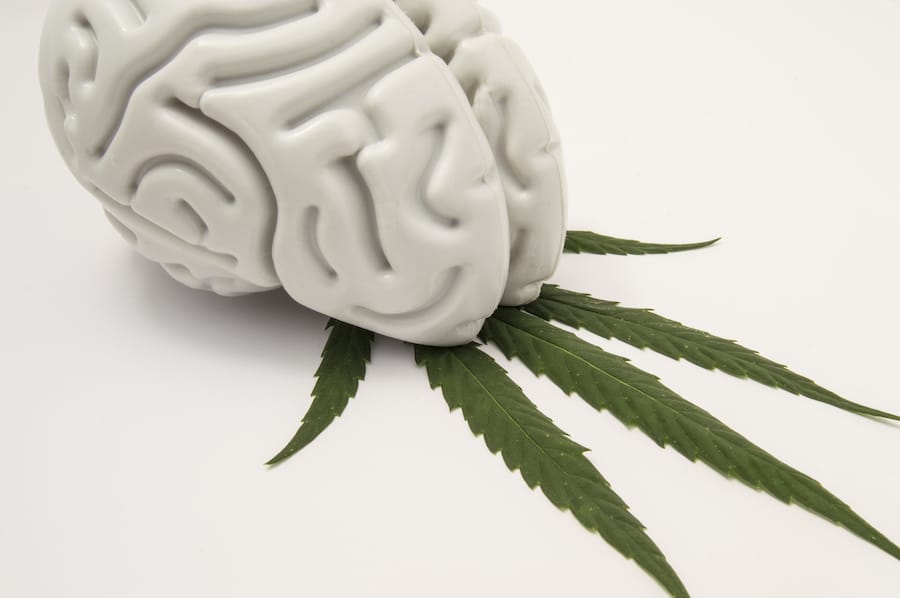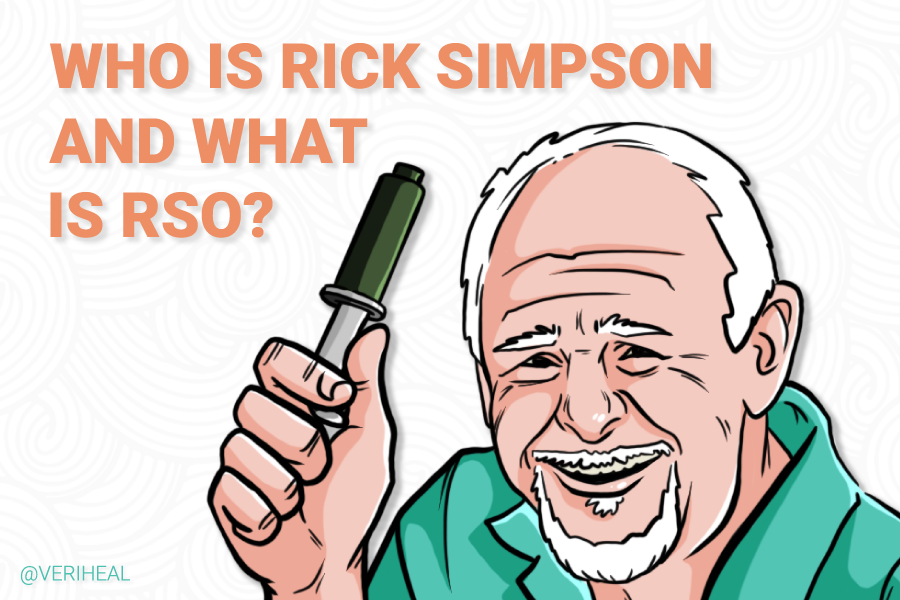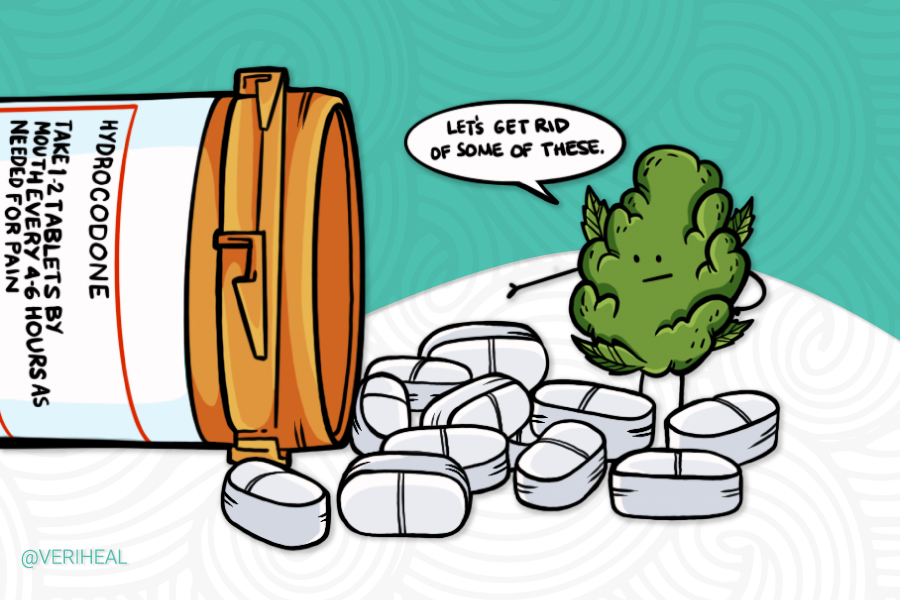Can Medical Marijuana Help Patients with Cerebral Palsy?

- Treating Cerebral Palsy Patients with Medical Cannabis
- Treating Pediatric Patients with Cannabis
- Considerations to Keep in Mind
- Understanding the Different Types of Cerebral Palsy
For many patients with cerebral palsy, muscle stiffness, chronic pain, and muscle spasticity are just part of their daily life. Cerebral palsy (CP) begins in the womb or at birth and is caused by abnormal brain development that affects the child’s ability to speak and move their muscles, among other possible complications. It is the leading cause of motor disability in children as it causes issues with involuntary movements, motor skills, stuttering, and stiff muscles (16). Thus, the muscles are also affected and it is considered a life-long neurological and developmental disorder. Fortunately, the severe symptoms of CP can potentially be relieved with reduced amounts or without the use of opioids, and instead with cannabis.
Cannabis contains cannabinoids, the most well-known being Δ9-tetrahydrocannabinol (THC) and cannabidiol (CBD). Cannabinoids work by influencing the endocannabinoid system, which is made up of fat-based neurotransmitters. Cannabis binds to CB1 and CB2 receptors in the body, which influences the levels of endocannabinoids, including anandamide (AEA).
For more information on how the endocannabinoid system works, please see our page on endocannabinoids here.
Treating Cerebral Palsy Patients with Medical Cannabis
Several symptoms of cerebral palsy can be temporarily relieved with the use of cannabis. Research into treating cerebral palsy symptoms is just beginning and has not proven any clear benefits yet, but it is promising based on existing cannabis research for similar symptoms and conditions. Please check out the list below for more information on how cannabis might be able to help your specific symptoms including:
Spasticity
CP is often characterized by spastic, or rigid, muscles. The muscles typically have increased muscle tone that causes arms, legs, hands, and feet to have difficulties functioning, which causes pain and difficulty moving (19).
Please check out our guide on spasticity for more specific information about how cannabis can help treat this symptom of cerebral palsy.
Chronic Pain
Many CP patients experience a lot of chronic pain due to muscle spasms and muscle tightness. Cannabis can help relieve chronic pain, but for patients who are worried about the psychoactive effects of THC, CBD is a non-intoxicating alternative for pain relief.
Check out our chronic pain page for more information here.
Insomnia
Some cerebral palsy patients can have issues with falling asleep and staying asleep due to spasticity and muscle pain. While taking cannabis specifically for these symptoms can help improve your sleep quality, another option is taking cannabinol (CBN) (20).
For more information about relieving sleep issues with cannabis, please check out our guide on insomnia.
Seizures
Since CP is a neurological disorder that is essentially caused by damage to the brain, seizures are a regular occurrence for some patients. Through the endocannabinoid system, cannabis may decrease the release of neurotransmitters that activate neurons and thereby decrease seizures (18). It is extremely important to talk to your doctor before trying to use medical cannabis if you have seizures as cannabis is known to interact with certain anti-epileptic medications.
For more information about treating seizures, check out our page on epilepsy.
Treating Pediatric Patients with Cannabis
Between 35% and 50% of children with CP experience seizures alongside muscle spasticity and chronic pain (12). Since this is a lifelong disorder that begins in infancy, it is important to understand how cannabinoids can help a child. For parents who are concerned about the side effects of THC, it should be ok to use CBD to help relieve these symptoms in their children with a pediatrician’s recommendation. Many parents choose to give their children CBD oil for this reason.
Cannabis was tested in a group of 25 children between 1 and 17-years-old for complex motor disorders, which includes cerebral palsy. Though this study was small and both groups received different combinations of CBD and THC, it had promising results for the pediatric population. Patients in this study experienced improvements in spasticity, aberrant muscle movements, pain severity, and an overall improvement in their quality of life (7).
Considerations to Keep in Mind
It is very important to talk with the doctor who is treating your CP as cannabis treatments may not be right for everyone depending on the complexity of your symptoms. A multimodal approach consisting of physical, speech, and occupational therapists along with appropriate specialist treatment can benefit patients the most.
In addition, some patients who have speech issues due to CP may see benefits in their ease of speaking, though there is no scientific evidence of this (12) (14).
Understanding the Different Types of Cerebral Palsy
CP is a group of disorders that affect a person’s ability to move and maintain balance and posture (16). It is caused by abnormal brain development or damage to the developing brain. It is typically diagnosed during childhood or at birth and has lifelong symptoms.
Cerebral palsy can be classified into the following:
Spastic Cerebral Palsy
In Spastic CP, patients have increased muscle tone, making their muscles stiff and movement uncoordinated (16). It is the most common type of CP, affecting 80% of CP patients. The types of this form of CP include (16):
- Spastic diplegia/diparesis – muscle stiffness in this type primarily affects the legs. Patients with this type of CP have a hard time walking because of tight hip and leg muscles that cause the legs to turn inward, pull together, and cross at the knees.
- Spastic hemiplegia/hemiparesis – This type of CP only affects one-half of the body. Usually, the arm is affected more than the leg.
- Spastic quadriplegia/quadriparesis – As the most severe form of CP, it affects the arms, legs, face, and trunk portions of the body. Patients with this type usually cannot talk and also experience intellectual disabilities, seizures, or problems with vision, hearing, or speech.
Dyskinetic Cerebral Palsy
This type of CP includes athetoid, choreoathetoid, and dystonic cerebral palsies. Patients with dyskinetic CP have difficulty controlling the movement in their hands, arms, legs, and feet, resulting in uncontrollable movements that are either slow or rapid and jerky (16). In addition, the muscle tone can change from too tight to too loose throughout the day.
Ataxic Cerebral Palsy
Patients with this type of CP experience problems with balance and coordination leading to unsteadiness when walking, struggling with movements that need a lot of muscle control, or controlling their hands or arms while reaching for an object (16).
Mixed Cerebral Palsy
This type of CP is classified when a patient has a combination of the above categories. The most common type of mixed CP is spastic-dyskinetic cerebral palsy (16).
A Patient’s Perspective
A 2011 study analyzed survey results about what treatment options adults with CP liked to use for pain. 87 patients indicated their areas of pain as well as what pain treatments they tried in the six months preceding this survey (3). 71% of patients reported that their most painful area was their lower back, and 58% also cited hip and leg pain. Five percent of the patients surveyed have either previously used or are currently using cannabis to help with pain. Patients most commonly used physical therapy to help alleviate their pain.
Though only a small percentage of patients admitted to using marijuana, this study further proves that more research is needed in this area, because patients are interested in trying cannabis for their CP symptoms.
Note: Veriheal does not intend to give this as professional medical advice. Do not attempt to self-diagnose or prescribe treatment based on the information provided on this page. Always consult a physician before making any decision on the treatment of a medical condition.
1. Blimkin, L., Libzon, S., Bar-Lev Schleider, L., Saban, N., Levit, L., Zerem, A., . . . Lerman-Sagie, T. (2017). Medical cannabis in children with complex motor disorders. European Journal of Paediatric Neurology, 21. https://www.researchgate.net/publication/317591999_Medical_cannabis_in_children_with_complex_motor_disorders
2. Fairhurst, C., Kumar, R., Checketts, D., Tayo, B., & Turner, S. (2020). Efficacy and safety of nabiximols cannabinoid medicine for paediatric spasticity in cerebral palsy or traumatic brain injury: A randomized controlled trial. Developmental Medicine & Child Neurology, 62(9), 1031-1039. https://onlinelibrary.wiley.com/doi/10.1111/dmcn.14548
3. Hirsh, A. T., Kratz, A. L., Engel, J. M., & Jensen, M. P. (2011). Survey results of pain treatments in adults with cerebral palsy. American journal of physical medicine & rehabilitation, 90(3), 207–216. https://www.ncbi.nlm.nih.gov/pmc/articles/PMC3036542/
4. Hounie, A., & Almeida Vasques, M. (2019). Neurological improvement with medical cannabis in a progressive supranuclear palsy patient: A case report. Medical Cannabis and Cannabinoids, 2(2), 65-68. https://www.karger.com/Article/FullText/503864
5. Jansheski, G., MD. (2020, March 30). Cerebral Palsy and Medical Marijuana. Retrieved March 06, 2021, from https://www.cerebralpalsyguidance.com/cerebral-palsy/treatment/medical-marijuana/
6. Kumar, R., Chambers, W., & Pertwee, R. (2001). Pharmacological actions and therapeutic uses of cannabis and cannabinoids [PDF]. Anaesthesia. https://associationofanaesthetists-publications.onlinelibrary.wiley.com/doi/pdf/10.1111/j.1365-2044.2001.02269.x
7. Libzon, S., Schleider, L. B., Saban, N., Levit, L., Tamari, Y., Linder, I., Lerman-Sagie, T., & Blumkin, L. (2018). Medical Cannabis for Pediatric Moderate to Severe Complex Motor Disorders. Journal of child neurology, 33(9), 565–571.https://pubmed.ncbi.nlm.nih.gov/29766748/
8. Mack A, Joy J. Marijuana as Medicine? The Science Beyond the Controversy. Washington (DC): National Academies Press (US); 2000. 7, MARIJUANA AND MUSCLE SPASTICITY. Available from: https://www.ncbi.nlm.nih.gov/books/NBK224382/
9. MEDICAL MARIJUANA IN CERTAIN NEUROLOGICAL DISORDERS [PDF]. (2014). Minneapolis: American Academy of Neurology.
10. Medical cannabis: Scientific overview. (2018, February 22). Retrieved March 14, 2021, from https://cerebralpalsy.org.nz/adult/medical-cannabis-scientific-overview/
11. MyCPChild. (2020, June 19). Marijuana for children with cerebral palsy? Retrieved March 14, 2021, from https://www.mycerebralpalsychild.org/blog/marijuana-cbd/
12. PETRO, D. J., & ELLENBERGER, C. (1981). Treatment of human spasticity with δ9-tetrahydrocannabinol. The Journal of Clinical Pharmacology, 21(S1). https://accp1.onlinelibrary.wiley.com/doi/abs/10.1002/j.1552-4604.1981.tb02621.x
13. Borreli, L. (2013, December 10). Without Medical Marijuana, Woman With Cerebral Palsy, Jacqueline Patterson, Would Be ‘Half The Mother I Am.’ Retrieved December 10, 2021, from https://www.medicaldaily.com/without-medical-marijuana-woman-cerebral-palsy-jacqueline-patterson-would-be-half-mother-i-am-video
14. Suryadevara, U., Bruijnzeel, D. M., Nuthi, M., Jagnarine, D. A., Tandon, R., & Bruijnzeel, A. W. (2017). Pros and Cons of Medical Cannabis use by People with Chronic Brain Disorders. Current neuropharmacology, 15(6), 800–814. https://www.ncbi.nlm.nih.gov/pmc/articles/PMC5652027/
15. What is cerebral palsy? (2020, December 31). Retrieved March 14, 2021, from https://www.cdc.gov/ncbddd/cp/facts.html
16. Zettl, U. K., Rommer, P., Hipp, P., & Patejdl, R. (2016). Evidence for the efficacy and effectiveness of THC-CBD oromucosal spray in symptom management of patients with spasticity due to multiple sclerosis. Therapeutic advances in neurological disorders, 9(1), 9–30. https://www.ncbi.nlm.nih.gov/pmc/articles/PMC4710104/
17. Zaheer, S., Kumar, D., Khan, M. T., Giyanwani, P. R., & Kiran, F. (2018). Epilepsy and Cannabis: A Literature Review. Cureus, 10(9), e3278. https://www.ncbi.nlm.nih.gov/pmc/articles/PMC6235654/
18. U.S. Department of Health and Human Services. (n.d.). Spasticity information page. National Institute of Neurological Disorders and Stroke. https://www.ninds.nih.gov/Disorders/All-Disorders/Spasticity-Information-Page
19. National Center for Biotechnology Information (2021). PubChem Compound Summary for CID 2543, Cannabinol. Retrieved August 7, 2021 from https://pubchem.ncbi.nlm.nih.gov/compound/Cannabinol







